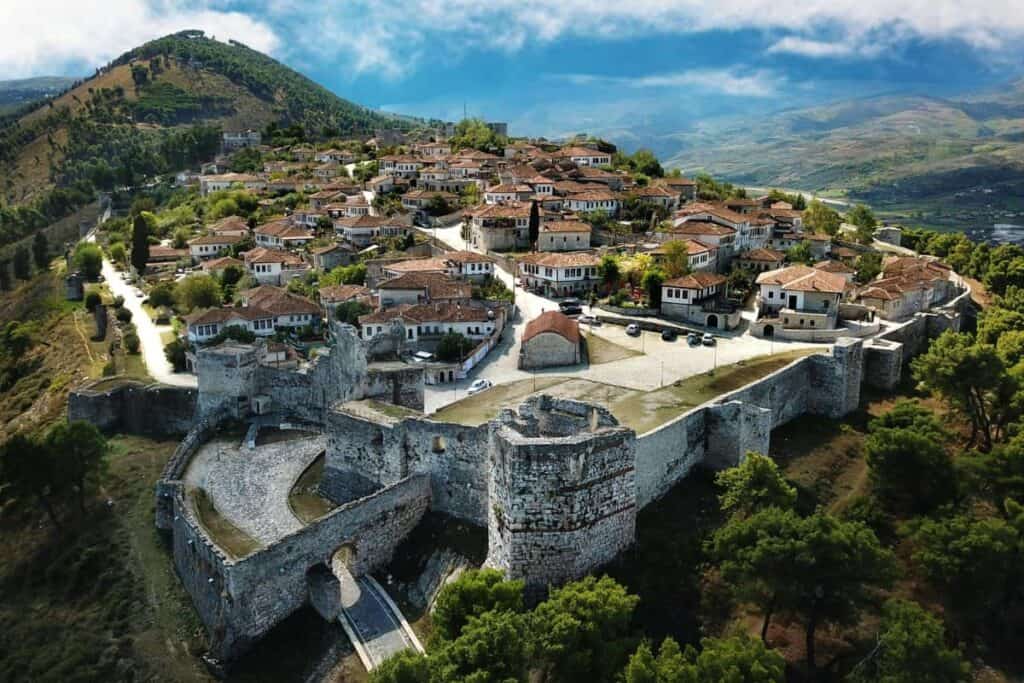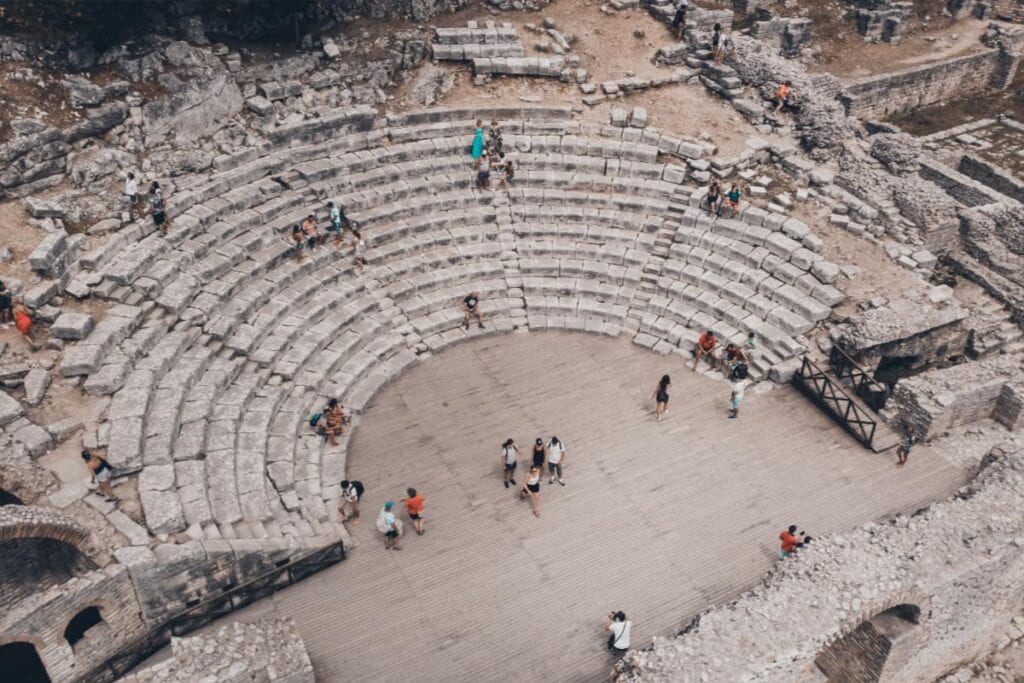Introduction
Albania’s UNESCO World Heritage Sites are a testament to its rich history and diverse cultural heritage. From ancient ruins to Ottoman-era towns, these landmarks offer visitors a chance to step back in time and explore the stories that shaped Albania. Here’s your guide to the UNESCO sites in Albania and what makes each one unique.
1. Butrint National Park
Nestled in the southern part of Albania near Sarandë, Butrint National Park is an archaeological wonder. Recognized as a UNESCO site in 1992, Butrint showcases the remains of an ancient city that was once a hub for Greek, Roman, Byzantine, and Venetian civilizations.
Highlights:
- The Amphitheater: A well-preserved structure dating back to Roman times.
- The Lion Gate: A monumental entrance featuring intricate carvings.
- The Basilica: A Byzantine church with beautiful mosaic floors.
Butrint’s stunning natural surroundings, including the Vivari Channel, add to its charm, making it a must-visit destination for history buffs and nature lovers alike.
2. Berat – The City of a Thousand Windows
Berat, known as the “City of a Thousand Windows,” was inscribed as a UNESCO World Heritage Site in 2008. This picturesque town is famous for its Ottoman-era architecture and cultural harmony, where mosques and churches stand side by side.
Must-Visit Sites:
- Berat Castle: A fortress perched on a hill with panoramic views of the Osum River.
- The Onufri Museum: Housed in a church within the castle, it features stunning religious art.
- Mangalem Quarter: A historic neighborhood with its signature whitewashed houses.
Berat is a living museum where Albania’s past and present come together seamlessly.
3. Gjirokastër – The Stone City
Gjirokastër, another UNESCO site, is often called the “Stone City” due to its unique architecture. Designated in 2005, this southern town is a treasure trove of Ottoman-era history and culture.
Top Attractions:
- Gjirokastër Castle: A massive fortress housing a museum and offering breathtaking views.
- Ethnographic Museum: Located in Enver Hoxha’s former home, it provides insights into traditional Albanian life.
- Bazaar Street: A charming cobblestone street lined with shops selling local crafts and souvenirs.
Gjirokastër’s distinctive stone-roofed houses make it one of the most picturesque towns in Albania.
Why Visit UNESCO Sites in Albania?
Each of Albania’s UNESCO sites tells a unique story about the country’s rich cultural and historical heritage. These destinations offer a glimpse into the civilizations that shaped Albania and provide a deeper understanding of its identity.
What Makes Them Special?
- Preservation of History: These sites are meticulously maintained to preserve their authenticity.
- Cultural Diversity: From ancient ruins to Ottoman-era towns, Albania’s UNESCO sites showcase a blend of influences.
- Scenic Locations: Surrounded by natural beauty, these sites are as visually stunning as they are historically significant.
Conclusion
Albania’s UNESCO World Heritage Sites are more than just tourist attractions—they are windows into the country’s soul. Whether you’re wandering through the ruins of Butrint, admiring the Ottoman charm of Berat, or exploring the stone streets of Gjirokastër, these landmarks offer an unforgettable journey through time. Add these UNESCO sites in Albania to your itinerary and discover the stories that make this country so unique.


